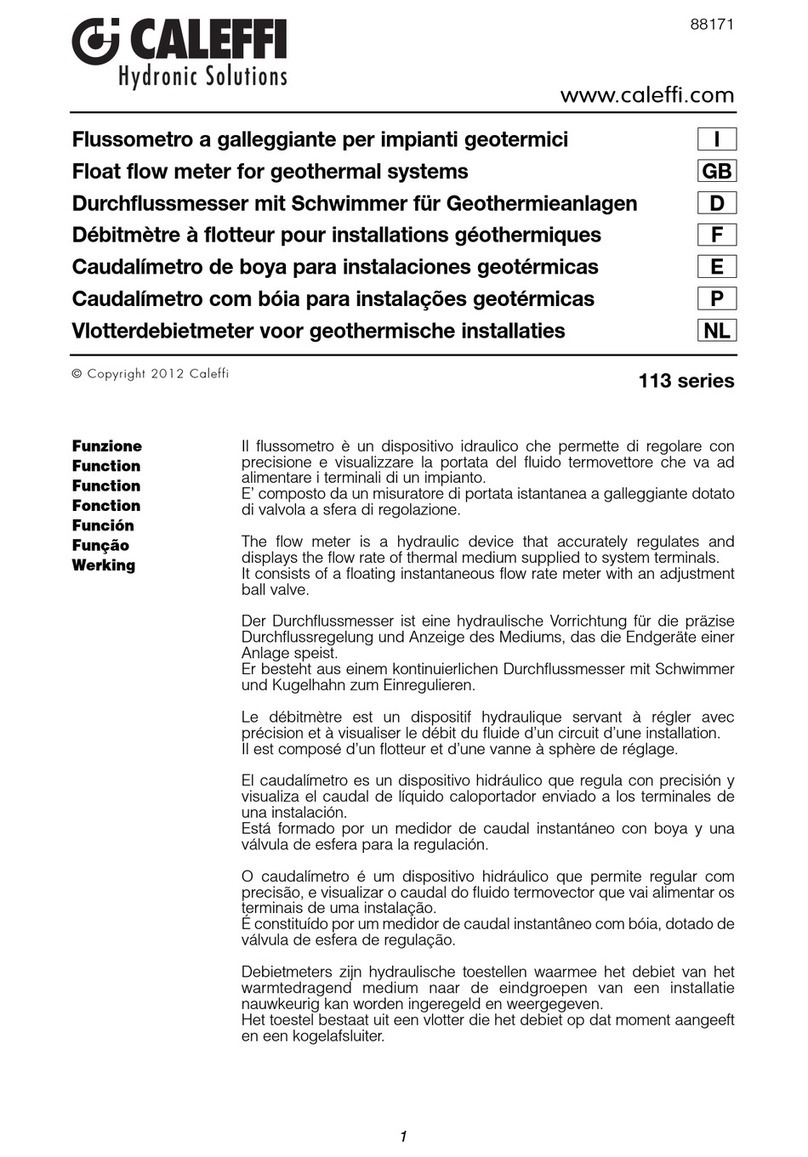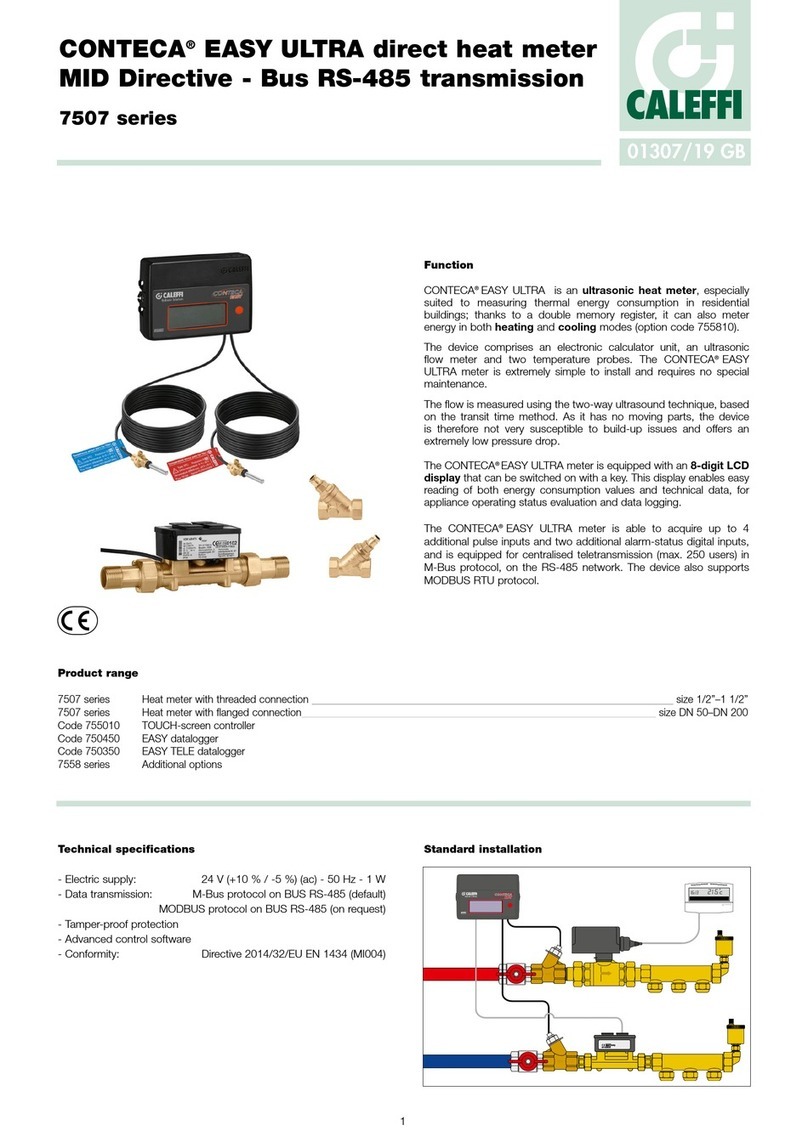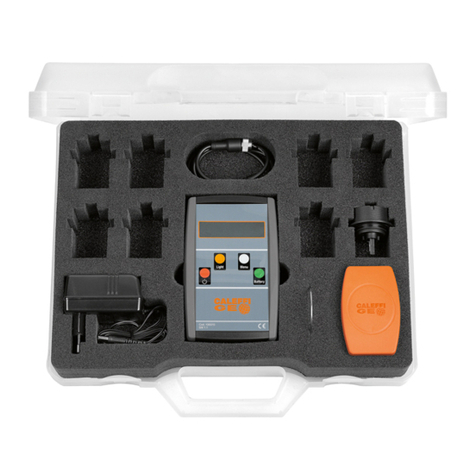
2
Insta ation
Preliminary recommendations
Comply with the ollowing instructions for installation and examine the installation diagram.
Failure to observe these instructions may invalidate warranty and correct measurement of the
thermal energy.
1 Installing the SENSONICAL ULTRA series heat meter requires fitting the probe holder valve
code CAL19180 or the TEE code CAL19181 in the system on the flow pipe, observing all the
instructions on the relevant instruction sheet.
2 The flow temperature probe must be inserted in the probe holder valve or in the TEE so that
it reaches the centre of the pipe. Make sure that the probe does not touch the bottom. The
immersion depth can be adjusted by means of the nipple.
3 The SENSONICAL ULTRA meter must be installed by technically qualified personnel.
4 The meter must be positioned on the pipe at a distance of more than 200 mm from motors,
switches and regulators and more than 50 mm from electrical cables in compliance with the
requirements of the EC directive on electromagnetic compatibility and to ensure interference-
free operation.
5 Flush the system before inserting the hydraulic section.
6 The correct positioning of the hydraulic section of SENSONICAL ULTRA is on the return
pipe; attention must be paid to observe the correct direction o the low. The temperature
probe not sealed to the template of the volume meter must necessarily be inserted in the
pocket of the valve CAL19180 or TEE CAL19181 on the system flow line. Consider also that
the length of the flow probe cable is equal to 1.5 m and that it can be neither extended nor
shortened; if it is too long, it is advisable to wind it and secure it with a plastic cable tie.
Before and after the meter there must be shut-o ball valves in case it needs to be replaced
or inspected. A strainer upstream of the system is necessary in order to prevent any
blockages.
7 We recommend installing a venting device: air bubbles can cause measurement errors.
8 Clean the instrument only if required using a cloth moistened with water.
9 When positioning, consider the risk of water dripping onto the electronic component of the
heat meter.
Contents of the pack
No.1 heat meter consisting of: detachable electronic unit, volume meter, two temperature probes.
All these parts are permanently connected to each other.
No.1 instruction sheet for installation.
No.1 sealing kit for flow probe and hydraulic section.
No.2 3/4’’ M tailpiece-nut fittings




























